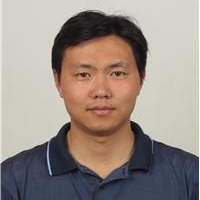Advanced Structure Materials and Processing
A special issue of Applied Sciences (ISSN 2076-3417). This special issue belongs to the section "Materials Science and Engineering".
Deadline for manuscript submissions: closed (31 October 2022) | Viewed by 13755
Special Issue Editors
Interests: constitutive modeling for plasticity; multiscale modeling and simulation for structure materials; experimental mechanics; metal forming and shaping
Special Issues, Collections and Topics in MDPI journals
Interests: high-performance manufacturing; plasticity; plastic instability; multiscale modeling; optimization
Special Issues, Collections and Topics in MDPI journals
Interests: fatigue and fracture behavior of materials; mechanical characterization; structural integrity of conventional and innovative materials
Special Issues, Collections and Topics in MDPI journals
Special Issue Information
Dear Colleagues,
Structural materials are materials used or studied primarily for their robust and reliable mechanical properties in numerous engineering applications. Through advanced technologies for processing, microstructural control and shaping (or forming), the functional performance of the structural materials and products can even be tailored. This Special Issue will address the major classes of structural materials such as metals, polymers, composites and ceramics as well as hybrid and other emerging materials. The Special Issue will also deal with recent advances in the processing, material characterization, modeling and simulation of advanced structural materials at different length scales, from the micro- to macroscale. Moreover, it will address the fundamental and broad relationships between materials, processes and their structures and their effects on physical and mechanical properties and various applications.
The topics for Advanced Structured Materials and Processing include but are not limited to:
- Ferrous alloys and steels;
- Non-ferrous metals and alloys (e.g., aluminum, magnesium, titanium and their alloys);
- Polymer or fiber-reinforced composites, CFRP and metal matrix composites (MMCs);
- Cellular materials, metallic foams, etc.;
- Porous materials;
- Structural materials for bioapplications;
- The simulation and modeling of structural materials;
- Constitutive modeling for advanced structural materials;
- The multiscale modeling of structural materials;
- Microstructure characterizations for structural materials;
- Advanced processing for structure materials;
- The forming and shaping of structure materials;
- The joining of structure materials
Prof. Dr. Myoung-Gyu Lee
Prof. Dr. Heng Li
Prof. Dr. Filippo Berto
Guest Editors
Manuscript Submission Information
Manuscripts should be submitted online at www.mdpi.com by registering and logging in to this website. Once you are registered, click here to go to the submission form. Manuscripts can be submitted until the deadline. All submissions that pass pre-check are peer-reviewed. Accepted papers will be published continuously in the journal (as soon as accepted) and will be listed together on the special issue website. Research articles, review articles as well as short communications are invited. For planned papers, a title and short abstract (about 100 words) can be sent to the Editorial Office for announcement on this website.
Submitted manuscripts should not have been published previously, nor be under consideration for publication elsewhere (except conference proceedings papers). All manuscripts are thoroughly refereed through a single-blind peer-review process. A guide for authors and other relevant information for submission of manuscripts is available on the Instructions for Authors page. Applied Sciences is an international peer-reviewed open access semimonthly journal published by MDPI.
Please visit the Instructions for Authors page before submitting a manuscript. The Article Processing Charge (APC) for publication in this open access journal is 2400 CHF (Swiss Francs). Submitted papers should be well formatted and use good English. Authors may use MDPI's English editing service prior to publication or during author revisions.
Keywords
- structural materials
- mechanical properties
- microstructure
- shaping and forming
- material characterization
- modeling and simulation
- material processing







